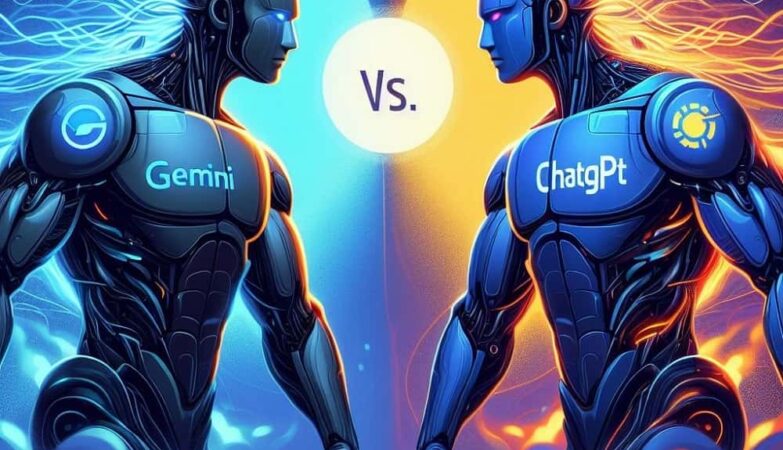In recent years, there has been a significant increase in the development and use of chatbots, which are computer programs designed to simulate conversation with human users. These chatbots can be found in a variety of applications, from customer service to personal assistants to language learning. One of the most advanced and promising chatbots in this field is ChatGPT, a language model chatbot that uses state-of-the-art natural language processing (NLP) techniques to understand and generate human-like responses.
Table of Contents
What is ChatGPT and How Does it Work?
ChatGPT is a chatbot developed by OpenAI, a research laboratory focused on advancing artificial intelligence. It is based on the GPT-3 language model, which was trained on a massive dataset of over 8 million web pages and is capable of generating human-like text. ChatGPT is designed to be able to have conversations with users, understanding and responding to their inputs in a natural way.
To use ChatGPT, users simply enter a message or question into the chatbot, and ChatGPT responds with a generated response based on its understanding of the input and its knowledge of language. The chatbot is able to understand the context of the conversation and generate appropriate responses, making it seem like it is having a real conversation with the user.
One of the unique features of ChatGPT is its ability to remember previous conversations and use that information to inform its responses. For example, if a user asks ChatGPT about its hobbies in one conversation, and then asks about its favorite color in a later conversation, ChatGPT might mention that it doesn’t have hobbies because it is a chatbot, but that its favorite color is blue. This ability to maintain a context and remember previous conversations adds an extra level of realism to the chatbot’s responses.
ChatGPT’s Capabilities for Natural Language Processing
One of the key capabilities of ChatGPT is its ability to process and understand natural language inputs. This means that the chatbot is able to understand the meaning of words and phrases, as well as their relationships to each other, in a way that is similar to how humans process language. This allows ChatGPT to understand and respond to a wide range of inputs, including complex questions and statements.
In addition to understanding natural language inputs, ChatGPT is also able to generate responses in a way that is natural and human-like. This means that the chatbot is able to generate responses that are coherent, grammatically correct, and appropriate for the context of the conversation.
One way that ChatGPT is able to generate human-like responses is by using a technique called “fine-tuning.” This involves training the chatbot on a specific dataset or task, such as customer service conversations or language translation, to enable it to generate responses that are more tailored to that specific task. This allows ChatGPT to generate responses that are more appropriate and realistic for the given context.
Examples of ChatGPT in Action
To get a sense of ChatGPT’s capabilities, let’s take a look at a few examples of the chatbot in action.
Example 1: Responding to Questions
In this example, we can see ChatGPT responding to a variety of questions in a natural and coherent way:
User: “What is the capital of France?”
ChatGPT: “The capital of France is Paris.”
User: “What is the population of France?”
ChatGPT: “According to the latest estimates, the population of France is around 67 million.”
User: “What is the currency of France?”
ChatGPT: “The currency of France is the Euro.”
As we can see, ChatGPT is able to understand and respond to these questions in a way that is accurate and appropriate.
Example 2: Having a Conversation
In this example, we can see ChatGPT engaging in a more extended conversation with a user:
User: “Hi, how are you today?”
ChatGPT: “I’m doing well, thank you. How are you?”
User: “I’m doing okay, thanks for asking. Do you have any hobbies?”
ChatGPT: “As a chatbot, I don’t have hobbies in the traditional sense. However, I enjoy learning.”
The Use Of ChatGPT In Digital Marketing
ChatGPT is a variant of the popular GPT (Generative Pretrained Transformer) language model that is designed specifically for chatbot applications. In the field of digital marketing, ChatGPT can be used to create chatbots that can interact with customers in a natural, human-like manner. These chatbots can be used to handle customer service inquiries, provide product recommendations, or even assist with making purchases.
Additionally, ChatGPT can be used to generate personalized, automated responses to customer inquiries, which can help to improve the overall customer experience and increase customer satisfaction. Overall, the use of ChatGPT in digital marketing can help businesses to more effectively engage with their customers, streamline their operations, and drive sales.
Comparing ChatGPT to Other Language Model Chatbots
ChatGPT is not the only language model chatbot on the market, and it is worth considering how it compares to other options. One key aspect to consider is the size and capabilities of the underlying language model. ChatGPT is based on the GPT-3 language model, which is one of the largest and most advanced language models available.
This means that ChatGPT has access to a vast amount of knowledge and is able to generate highly realistic and human-like responses. However, other language model chatbots may be based on smaller or less advanced language models, which could potentially limit their capabilities.
In addition to the size and capabilities of the language model, it is also important to consider the specific use case for the chatbot. Some language model chatbots may be better suited for certain tasks, such as customer service or language translation, while others may be more general-purpose. It is worth evaluating the specific needs and goals of the project to determine the best fit for the chatbot.
Overall, ChatGPT is a highly advanced and capable language model chatbot, but it is worth considering how it compares to other options and evaluating the specific needs and goals of the project before making a decision.
Conclusion: The Potential of ChatGPT in the Future of Chatbots
In conclusion, ChatGPT is a highly advanced and promising chatbot that uses state-of-the-art natural language processing techniques to understand and generate human-like responses. Its ability to process and understand a wide range of inputs, as well as its ability to generate coherent and appropriate responses, make it an exciting development in the field of chatbots.
As language model chatbots continue to improve and become more widespread, ChatGPT has the potential to play a significant role in the future of chatbots and their applications. Whether it is used for customer service, language learning, or personal assistants, ChatGPT has the potential to revolutionize the way we interact with computer programs and make them more natural and intuitive for users.








